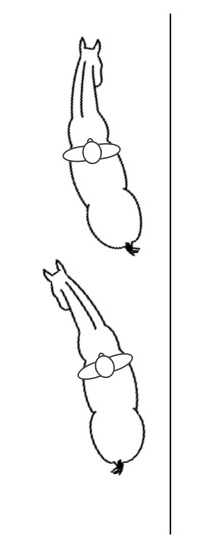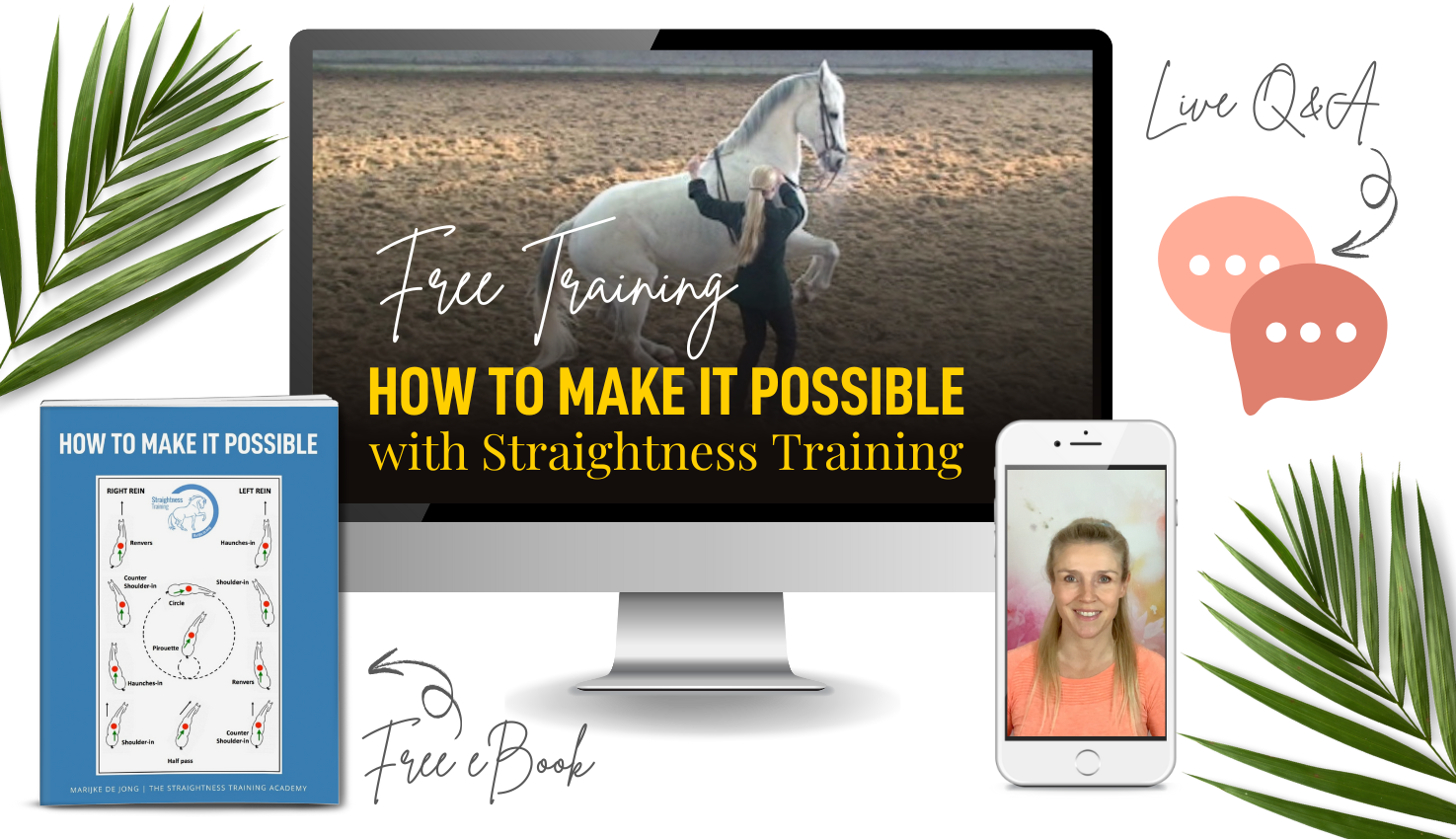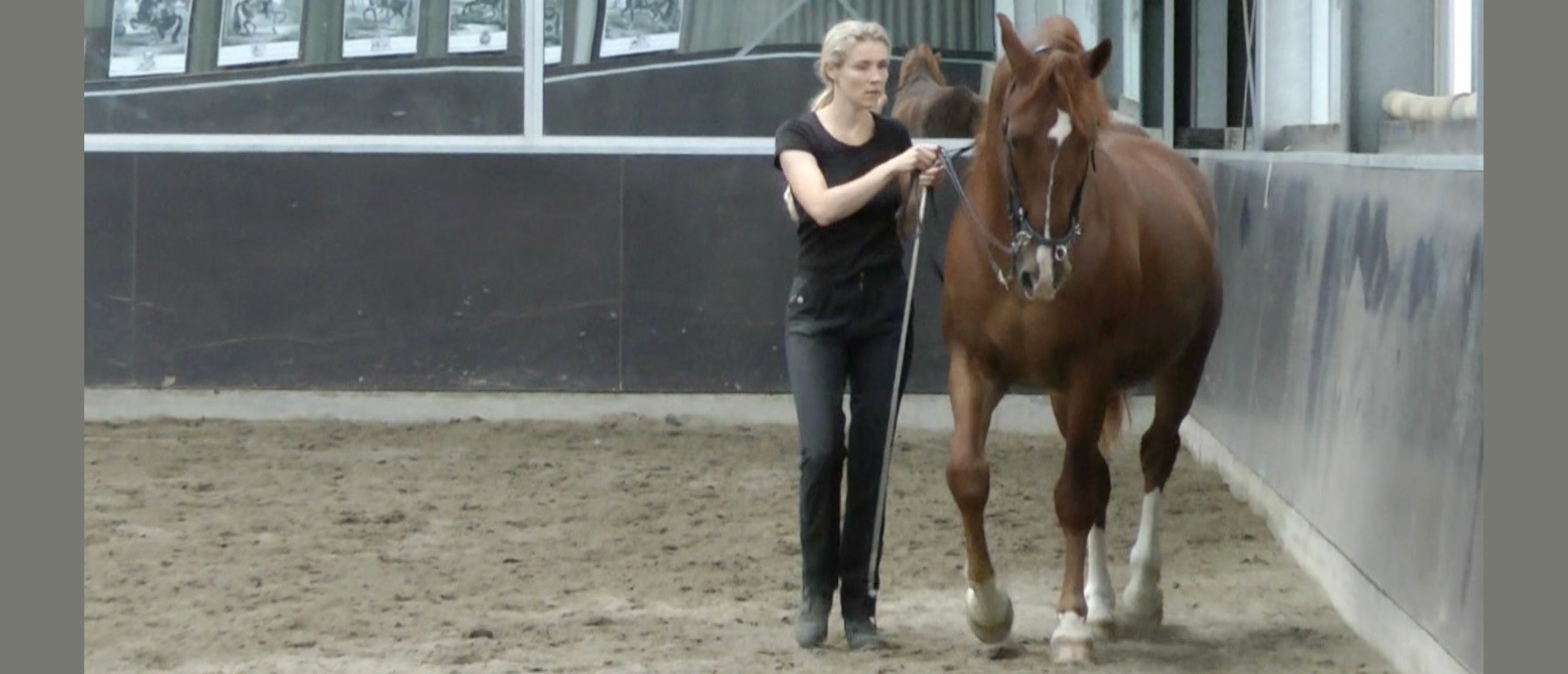
Renvers
Renvers is the mirror-exercise of haunches-in and has the exact same gymnastic effect.
The long term goal of Straightness Training is achieving flexibility, gaining strength, build muscle and improving your horse’s overall health and maintaining it for a lifetime. This goal is achieved through a logical system of progressive exercises.
Once your horse has learned the cornerstones shoulder-in and haunches-in, you can continue with teaching your horse renvers.
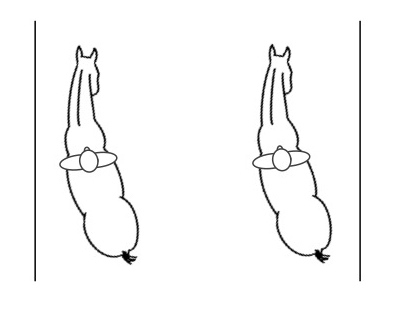
Haunches-in or Renvers?
Haunches-in is already mentioned by Salomon de la Broue (1630-1610) and François Robichon de la Guérinière (1688-1751). Both gentlemen had some doubts about this exercise.
- Guérinière stated that the horse, with its head next to the wall, will move more automatically forward-sideward than move between the riders’ aids. When the wall is then removed, the horse will not respond as well because the horse is used to the support the wall provided.
- De la Broue had the same opinion and recommend the haunches-in only for horses that are heavy in the hand, but in a way that there is always 1.5 meter between the horse and the wall.
Both gentlemen recommended the renvers rather than haunches-in.
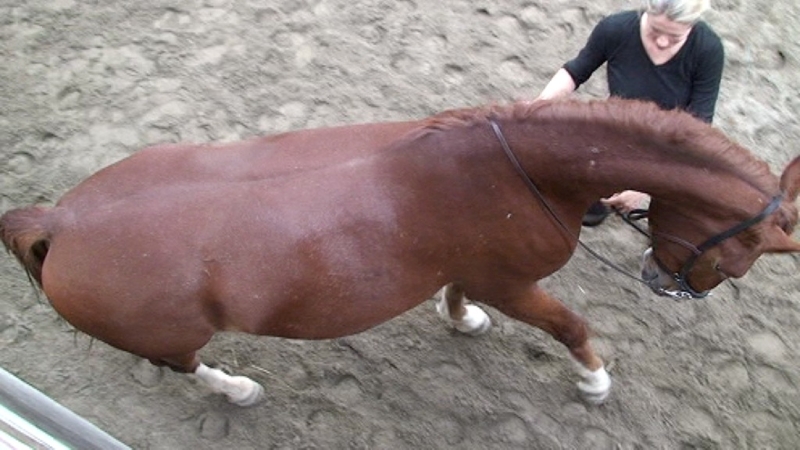
Renvers is a lateral movement on three or four tracks in which the horse looks where it is going.
In this exercise, the horse is also bended laterally from neck to tail.
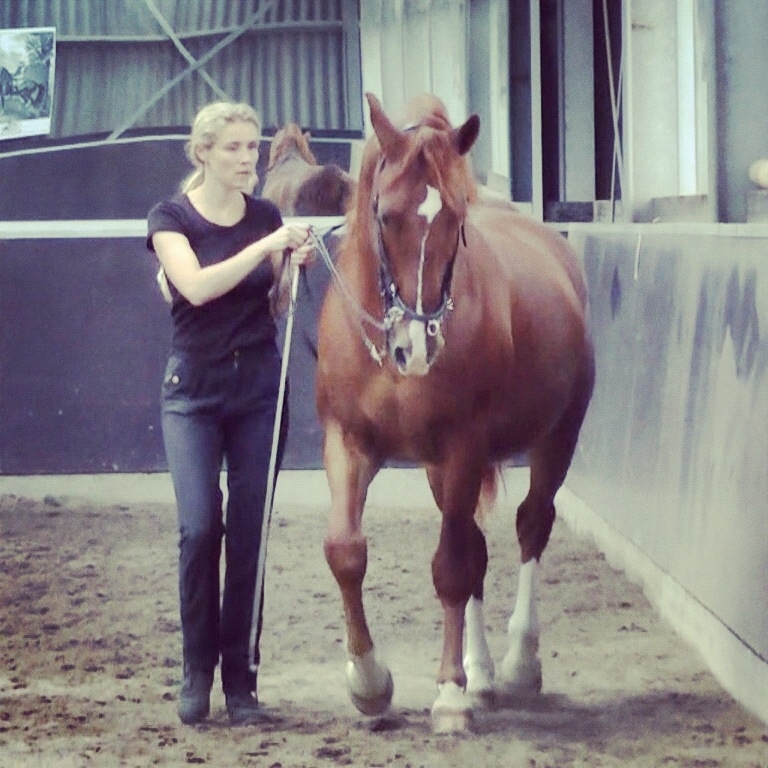
The outside hind leg is stepping under the weight.
The hindquarter walks on the track along the wall, the shoulders on the inside track.
This is in contrast to the haunches-in where the shoulders follow the wall and the hindquarter walks on the inside track.
Goal

Renvers has the same gymnastic effect as haunches-in:
- In haunches-in, in which the head of the horse is moving along the wall, the horse can walk forward-sideward automatically instead of following the rider’s aids.
- In renvers, the horse is not supported by the wall and has to follow the riders’ aids in order to carry out this exercise on its own legs.
Connection shoulder-in, haunches-in and renvers
In shoulder-in, the inside hind leg steps under the point of weight. In haunches-in and renvers, it is the outside hind leg that steps under the point of weight. By changing the bend in shoulder-in, the horse will end up into the renvers.
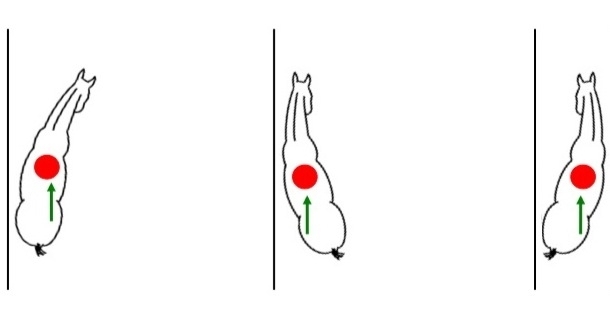
Four hind legs
By riding shoulder-in to the left and to the right, the horse is asked to step with the inside hind leg under the point of weight. By riding haunches-in and renvers to the left and right, the horse is asked to step under with the outside hind leg.

That means that the horse actually has four functions in his hind legs that are trained by these exercises:
- Left hind leg as inside hind leg
- Right hind leg as outside hind leg
- Left hind leg as outside hind leg
- Right hind leg as inside hind leg
Teaching the exercise to the horse
The renvers is first taught in-hand, then riding. As a preparation to this exercise, the rider should ask shoulder-in. Then the rider asks the horse to change the bend and this leads to the renvers. At the beginning, a few steps should be enough and when the horse gets stronger this can be built up towards an entire long side of the arena. The exercise can be done is walk, trot and finally also in canter.
Variations
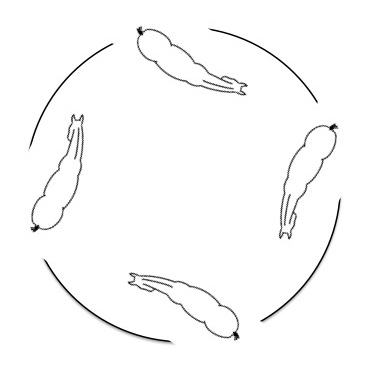
Renvers can be ridden on the straight line along the wall, through curves and in a circle.
The old grandmasters used to ride renvers on a circle and gradually decrease the size of that circle until a turn around the shoulders was done.
This way they managed to ride canter pirouettes in renvers.
| <– Transitions from haunches-in to renvers in walk and trot prepare the horse for the canter change. |
| <– Fluent transitions from shoulder-in to renvers improve balance, coordination and suppleness as well as the reaction of the horse to the aids. |


